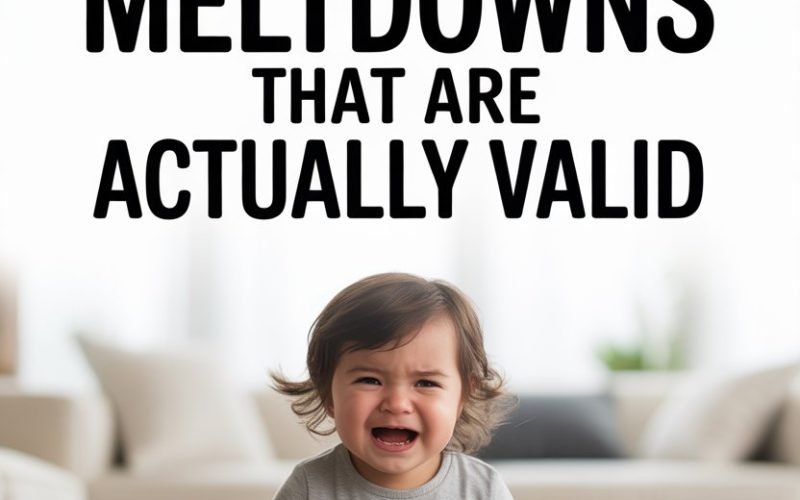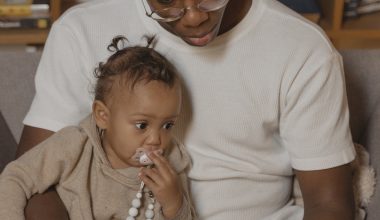Parenting a toddler is like being the personal assistant to a tiny, unpredictable celebrity—minus the pay and with considerably more snot. Tantrums happen, often at the least convenient moment.
But before you reach for the nearest parenting manual (or consider hiding in the pantry with a packet of biscuits), it’s worth acknowledging that some of these epic meltdowns are, well… pretty understandable.
Here’s a look at seven of the most common toddler tantrum triggers that actually make more sense than you might think, plus a few strategies for keeping your household from descending into a daily drama series.
1. The Snack Isn’t Cut the “Right” Way
You slice the apple into wedges instead of circles. The cucumber is in rounds, not sticks. Peanut butter is on the wrong half of the bread. Cue the shrieks.
To adults, this seems like nonsense. To a toddler, it’s the difference between edible and inedible. Their world is tiny, and the little details matter.
As child psychologist Dr. Laura Markham points out, the predictability of routines and preferences actually helps toddlers feel safe and in control.
What helps? When possible, offer choices. “Do you want your banana whole or in pieces?” If you forget and catastrophe strikes, validate their feelings: “You wanted your toast in triangles. That’s important to you.”
Sometimes a do-over fixes things; other times, it’s an emotional storm that just needs to blow over. Either way, your child learns their feelings are real—even if their culinary critiques are, frankly, exhausting.
2. Getting Dressed Is Apparently an Olympic Sport
Want to see an adult lose a wrestling match to a 12-kilo human? Try putting a toddler in trousers when they had their heart set on the tutu (even in December).
Clothing struggles aren’t just about stubbornness. Toddlers crave autonomy, and picking their outfit is one of the first ways they can assert independence.
Add in sensory sensitivities—scratchy tags, snug socks, the horror of seams—and it’s a recipe for pre-breakfast drama. Occupational therapists note this is especially true if your little one has sensory processing quirks.
A simple fix? Offer two outfit choices—both parent-approved. Let them practice pulling on undies or unzipping their own coat.
If they’re melting over a shirt that’s in the wash, empathy goes a long way: “You wanted your dinosaur shirt today. It’s tough to wait.”
Sometimes, that’s all you can do. Sympathy and a silent prayer.
3. Saying Goodbye Is Actually Hard
Ever tried sneaking out of a playdate or nursery? There’s a high chance your toddler transformed into a wailing, clinging limpet.
Separation anxiety isn’t manipulative. It’s developmentally normal.
As the American Academy of Pediatrics explains, around ages one to three, children genuinely believe you disappear forever once you’re out of sight (object permanence is a work in progress).
Help your child learn you always come back. Create a short goodbye ritual—a hug, a special phrase, a silly handshake.
Even if leaving triggers tears, keeping goodbyes predictable and brief helps build trust.
And no, slipping out without a word doesn’t “help” in the long run. It just makes you harder to trust next time.
4. Transition Time Is Turbocharged Drama
Announcing it’s time to leave the playground or turn off Bluey can be like declaring the end of fun forever. And wow, do toddlers protest.
The trouble is, small children live right here, right now. Delayed gratification is not their strong suit.
Abrupt transitions feel like a loss (because, in their minds, it is), and their brains aren’t wired to let go gracefully.
According to child development experts, offering a warning before a transition helps kids brace themselves emotionally.
Try a five-minute heads-up, and use visual timers or sand timers when you can. “Two more slides, then it’s time for snacks.”
If emotions run high, acknowledge the disappointment: “You wish we could stay all day.”
It won’t always prevent the meltdown, but it lets your child know you get it—even if you wouldn’t mind another round of swings yourself (or, you know, a pint and a nap).
5. The Nap Strikes Back
You’d think “I’m tired” would elicit a nap. You’d be wrong. For many toddlers, fatigue turns into a full-body existential crisis.
Sleep deprivation lowers frustration tolerance, and toddlers are hardwired to resist sleep as if it were an enemy agent. Sleep research shows overtired kids become hyper, cranky, and much less able to manage big feelings.
When the wheels start coming off, try to wind things down with calming activities: books, snuggles, dim lights, soft music. Rigid routines (bath, pyjamas, story, bed) can help signal it’s time to rest.
If you’re already deep into meltdown territory, sometimes the only way out is through. Hugs, patience, and a willingness to reschedule anything non-essential can save the day. (And don’t forget: you’re allowed to whinge to your mates about it later.)
6. Sharing Is a Tall Order
If you’ve ever watched toddlers “share,” you know it can look less like cooperation and more like a low-level hostage negotiation.
Here’s the reality: sharing is a learnt skill, not an inbuilt virtue.
Young children are developmentally egocentric, which means they genuinely struggle to see things from another’s perspective. Developmental psychologists assure us this is normal until around age three or four.
You can encourage taking turns by narrating what’s happening (“It’s Ben’s turn with the truck, then yours”). Timers, visual cues, and heaps of praise for the tiniest acts of generosity help.
Don’t force apologies or snatch toys away mid-play—these rarely teach compassion. Patience is your best tool, and some days you’ll need it by the bucketful.
7. Big Feelings About Tiny Injustices
The pink cup goes missing. Someone else presses the lift button. You dare to help with the shoes. And suddenly, the world is ending.
These drama-laden moments seem trivial, but for a toddler, they’re monumental. Their sense of control, justice, and order is still under construction.
According to child behaviour specialists, blowing up over small things is a sign they’re overwhelmed, not spoiled.
Try to stay calm, even if your internal monologue is less than zen. You don’t need to fix every crisis; just being present and accepting their feelings works wonders.
“It’s so tough when you wanted to press the button yourself.” Validate, offer a cuddle, and resist the urge to crack jokes about the International Cup Crisis—unless your child is ready to laugh with you.
Surviving (and Even Embracing) the Meltdowns
Here’s the comforting bit: almost every parent has experienced these meltdowns and lived to tell the tale.
The wild reactions often mean your child is learning, growing, and testing out their big emotions in a safe place. It’s messy work, but it’s part of the parenting package.
Your toddler isn’t broken—they’re just very new at being human.
Some days, you’ll have the patience of a saint and the wisdom of Mary Poppins. Other days, you’ll hide in the loo with your phone.
Wherever you land, know this: your child’s feelings are real, and the way you respond matters.
With empathy, clear boundaries, and a healthy sense of humour, you’ll both get through the toddler years—one epic meltdown at a time.





